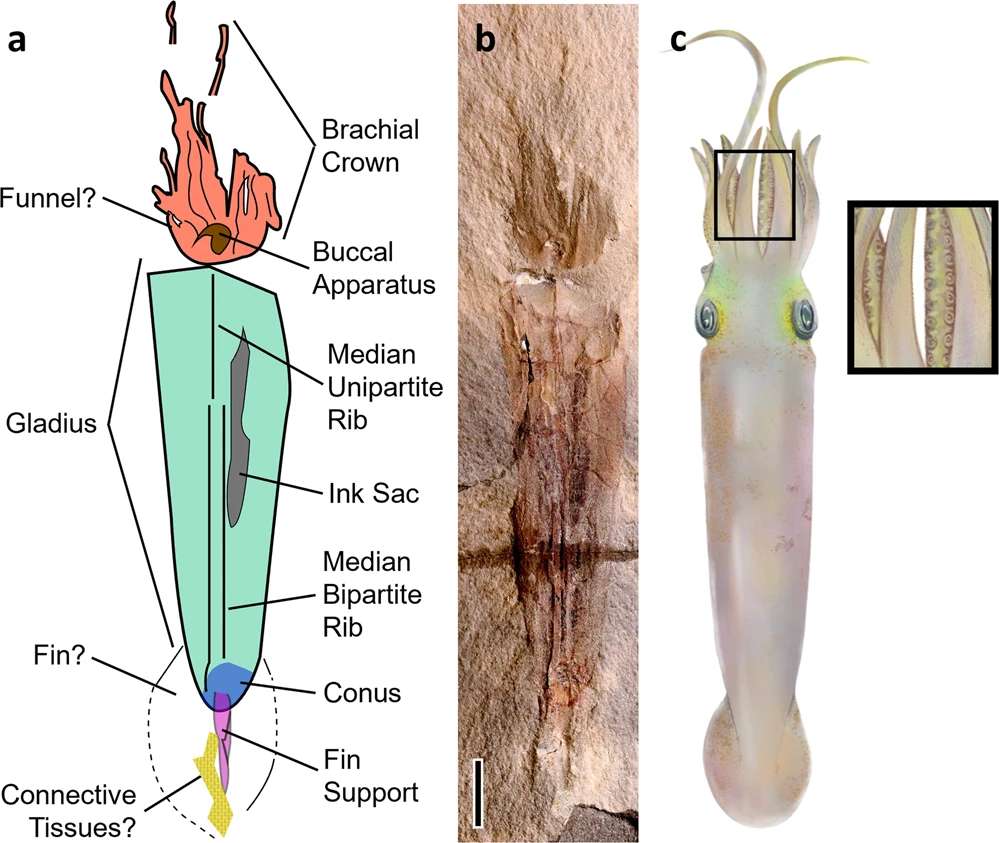The oldest vampyropod fossil has been discovered and has ten arms, unlike the octopuses and vampires of the abyss today. The latter would therefore have lost two arms during their evolution and the origin of these fascinating organisms precedes that of the first dinosaurs…
You will also be interested
[EN VIDÉO] This strange octopus of the abyss looks like a small ghost At sea, the abyss is probably one of the least known places on the planet. Globally unexplored, they are full of amazing wildlife, like this little octopus recently discovered by the National Oceanic And Atmospheric Administration (NOAA). Here it is on video, in its natural environment, off Hawaii.
What sizes could reach the cephalopods prehistoric? What was the variety of shapes of these molluscs and did they resemble those who now inhabit the seas and oceans of the globe? The answers to these questions are all the more intriguing because they are so difficult to find. The fossils of cephalopods are indeed rare because the mostly soft body of these organisms resists badly to degradation by environmental conditions. abiotic but also to that caused by scavengers and microorganisms. However, two researchers from the American Museum of Natural History in New York published an article in the newspaper NatureCommunications which reports the description of a cephalopod dating from almost 330 million years ago.
The specimen is the oldest known to date to possess suckers
The fossil comes from the Lagerstätte named Bear Gulch, located in Montana, USA. The fossil is dated to the Carboniferous and more precisely to the Mississippian (358.9 to 323.2 million years ago). The specimen was named Syllipsimopodi bideniand its namespecies refers to the current resident of the United States, Joseph R. Biden. The genus name partly derives from the Greek syllipsimos which means ” prehensile ” and of podi which means “foot”. This genus name was chosen by the authors of the article because the specimen is the oldest known to date to possess suckers, which certainly allowed the arms which were equipped with them to better catch prey. The specimen of S. bideni was about 12 centimeters long and had an ink pouch.
The fossil of S. bideni measures about 12 centimeters long and allows to distinguish an ink pocket as well as ten arms. © Christopher Whalen
Eight or ten arm vampires?
What fascinated the researchers, beyond the exceptional preservation of such an organism, is that the specimen has ten arms and that it belongs to the group of vampyropods. Two arms were longer than the others, they were four centimeters long against about two centimeters for the other eight arms. The group of vampyropods currently includes cephalopods such as the octopuses and the squid vampires or vampires of the abyss. However, these current organisms have only eight arms, unlike the current decabranches such as the squid and cuttlefish, which have ten. the fossil of S. bideni is therefore the first vampyropod known to have ten arms. This discovery allows the authors of the study to confirm that the ancestral state in cephalopods was the presence of ten arms and that two of them were lost in vampyropods during their evolution.
Interpretation of the fossil of S. bideni from Montana. © Whalen and Landman, 2022
Furthermore, molecular studies had suggested that the oldest representatives of the coleoids, which include the vampyropods, the decabranchs but also the now extinct belemnites, had appeared more than 300 million years ago. In the absence of a fossil corroborating this estimate, the latter remained hypothetical. The description of S. bideni therefore confirms this molecular result and pushes back the appearance of this group of cephalopods in the Carboniferous period, i.e. before the appearance of the first dinosaurs.
Interested in what you just read?

